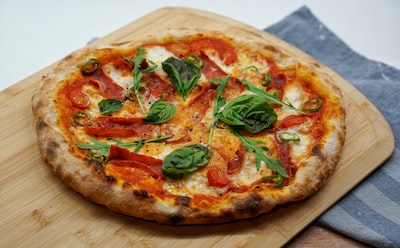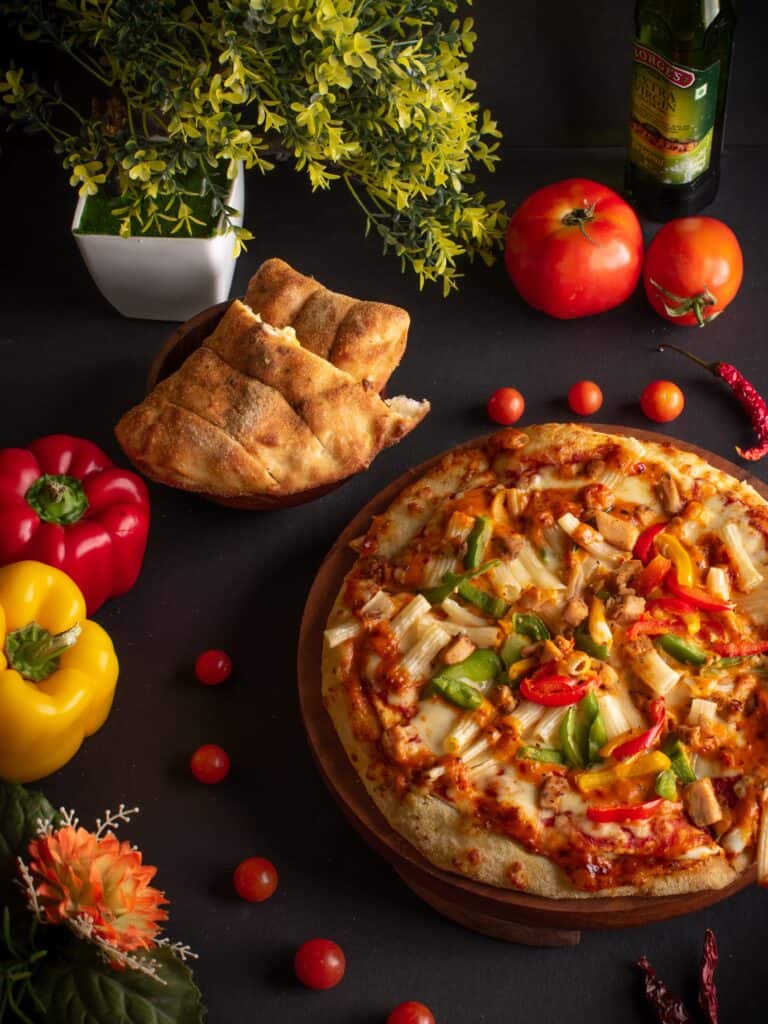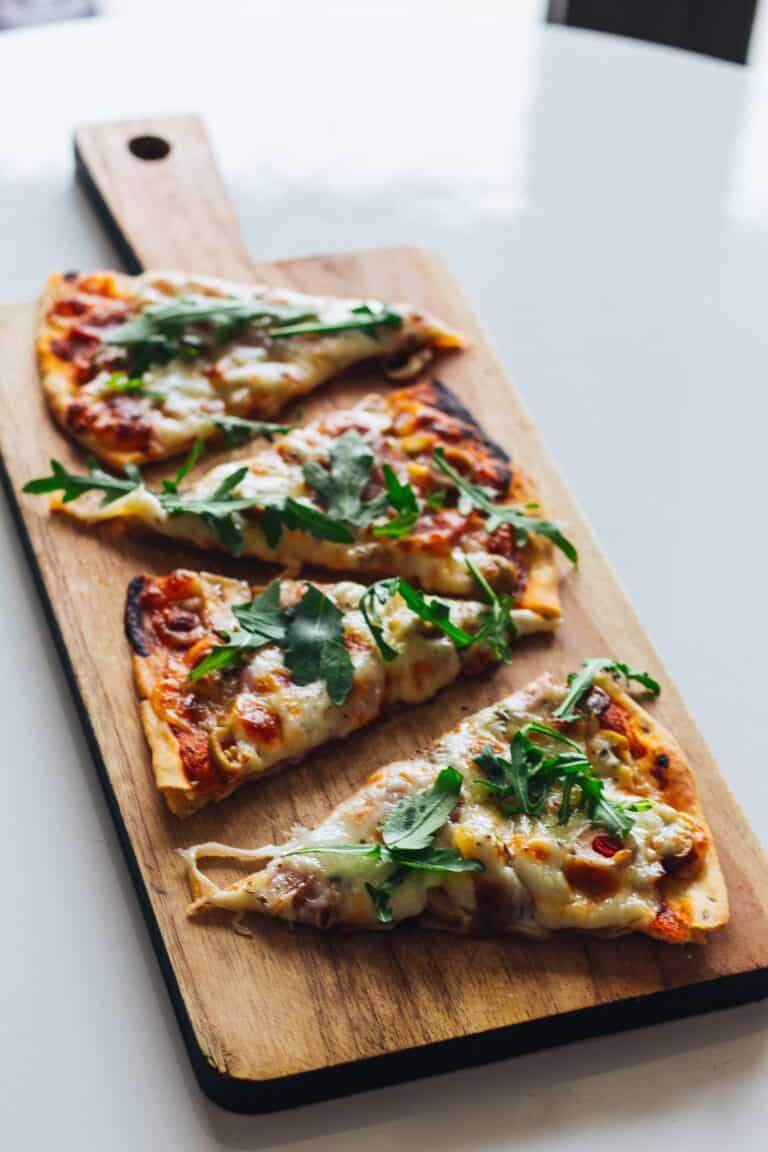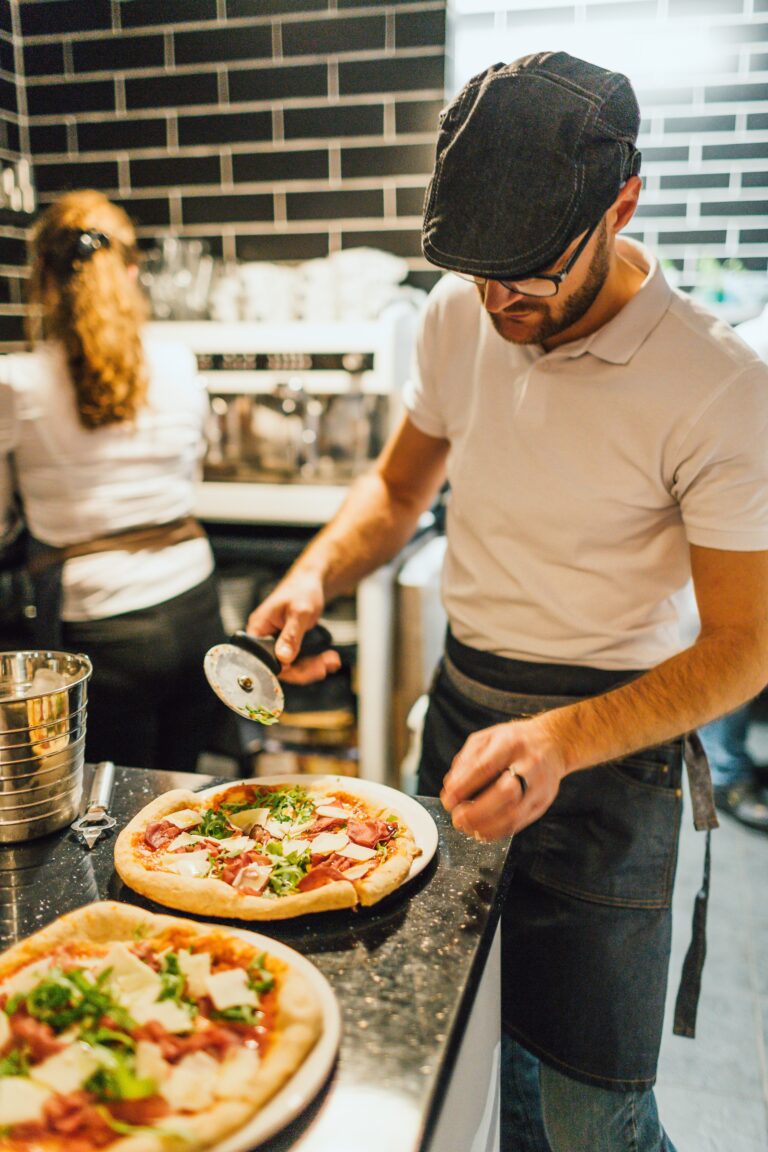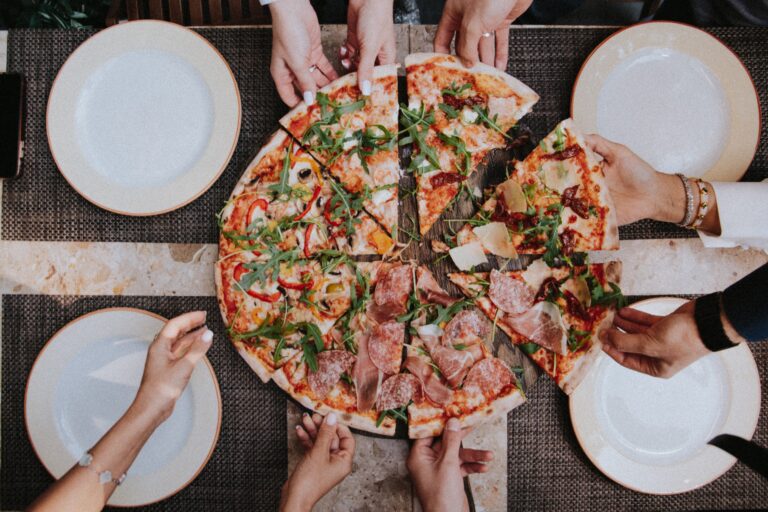Cooking Homemade Pizza on a Stovetop
Are you tired of ordering pizza and waiting for it to be delivered? Why not try cooking homemade pizza on your stovetop instead? In this article, we’ll explore the benefits of stovetop pizza making and provide you with essential tools and ingredients.
Follow our step-by-step guide to prepare the dough and sauce, perfect your cooking technique, and discover creative toppings and flavour combinations. Get ready to enjoy delicious homemade pizza right in your kitchen!
The Benefits of Stovetop Pizza Making
Making pizza on the stovetop has many advantages. One of the advantages is the convenience it offers. You don’t have to wait for your oven to preheat, saving you precious time.
Additionally, stovetop pizza cooks much faster than traditional oven-baked pizza. This means that you can satisfy your pizza cravings quickly.
The high heat from the stovetop creates a crispy crust that is hard to achieve in an oven. Direct contact with the heat source gives your pizza a crisp and chewy texture. So next time you’re craving homemade pizza, consider making it on the stovetop for all its advantages and convenience.
Essential Tools and Ingredients for Stovetop Pizza
You’ll need essential tools and ingredients to make a delicious stovetop pizza. Here’s what you’ll need:
-
Skillet: A cast iron skillet is perfect for cooking your pizza on the stovetop. It distributes heat evenly and helps create a crispy crust.
-
Pizza dough: You can make or buy pre-made dough from the store. Either way, make sure it’s at room temperature before using.
Toppings: Get creative with your toppings! Customize your pizza with your favourite cheeses, meats, vegetables, and sauces.
Cooking homemade pizza on the stovetop is a great alternative to traditional oven baking. With the proper cooking techniques, you can achieve a perfectly cooked pizza with a crispy crust and melty cheese in just a few minutes.
So gather your tools and ingredients, fire up the stove, and get ready to enjoy a delicious homemade stovetop pizza!
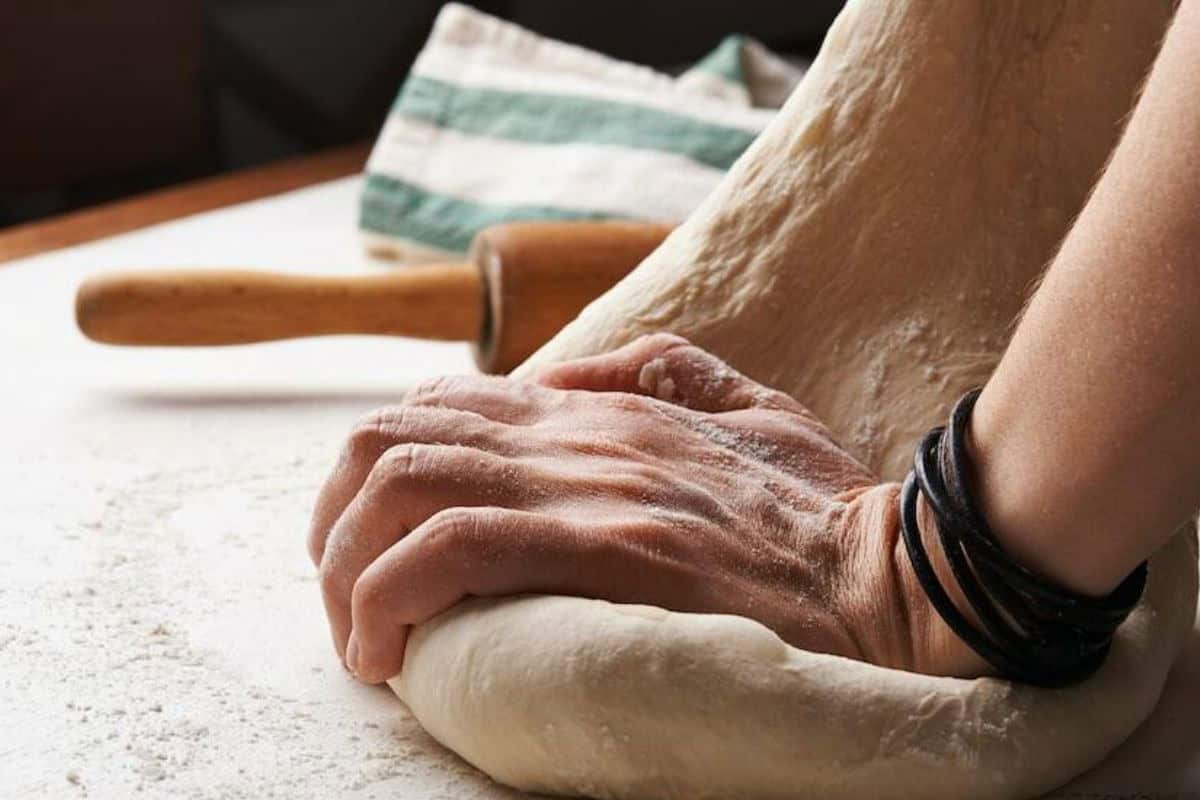
Step-by-Step Guide: Preparing the Dough and Sauce
You can easily prepare the perfect stovetop pizza using a cast iron skillet and room-temperature dough. Start by preparing your toppings of choice – classic pepperoni or a gourmet combination of fresh vegetables and artisanal cheese.
Once your toppings are ready, it’s time to focus on the baking techniques to give your pizza a crispy crust and gooey cheese.
First, preheat your cast iron skillet over medium-high heat. While the skillet is heating up, stretch out your dough into a round shape that fits the size of your skillet. Carefully place the dough into the hot skillet and cook for 2-3 minutes until golden brown on one side.
Next, flip the dough over using a spatula or tongs. This is where you can get creative with your toppings – spread on some tomato sauce, sprinkle on your favourite cheeses, and layer on those delicious toppings you prepared earlier.
Cover the skillet with a lid or aluminum foil to create a mini-oven effect. Let it cook for another 5-7 minutes until the cheese is melted and bubbly. Once cooked to perfection, remove from heat and let it cool for a minute before slicing into wedges. Enjoy this homemade stovetop pizza with friends and family!
Perfecting the Stovetop Pizza Cooking Technique
Covering the skillet with a lid or aluminum foil can help you achieve a crispy crust and gooey cheese on your stovetop pizza. When it comes to stovetop pizza techniques, there are a few things you need to keep in mind.
First, make sure your skillet is preheated correctly before adding the pizza. This will help create that perfect crust.
Next, use medium-low heat to cook the pizza evenly without burning it. Adjust the heat accordingly if your crust is browning too quickly or unevenly.
Another common issue when troubleshooting stovetop pizza cooking is soggy toppings. To prevent this, thoroughly drain any ingredients with high moisture content before adding them to the pizza. With these tips, you can whip up delicious stovetop pizzas quickly!
Creative Toppings and Flavor Combinations for Stovetop Pizza
When experimenting with different toppings and flavour combinations, it’s essential to remember that certain ingredients may require longer cooking times.
Here are three unique pizza toppings and unconventional flavours you can try on your stovetop pizza:
Smoked Salmon and Dill: Spread a layer of cream cheese on the dough, then top it with smoked salmon slices and sprinkle fresh dill over it. The smoky salmon and refreshing dill will create a delightful burst of flavours.
-
Pear and Gorgonzola: Thinly slice ripe pears and arrange them on the dough. Crumble gorgonzola cheese over the pears, drizzle a little honey for sweetness, and finish with chopped walnuts for added crunch.
-
BBQ Chicken and Pineapple: Cook chicken pieces in tangy barbecue sauce until tender, then shred them onto the dough. Add pineapple chunks for a tropical twist, sprinkle mozzarella cheese over everything, and bake until golden brown.
Get creative with your homemade stovetop pizzas by trying these unique topping combinations!
Frequently Asked Questions
How Do I Prevent the Dough From Sticking to the Pan While Cooking Homemade Pizza on a Stovetop?
I use alternative flour, like cornmeal or semolina, to prevent the dough from sticking to the pan while cooking homemade pizza on the stovetop. I sprinkle it on the pan before placing the dough on a non-stick surface.
Can I Use a Different Type of Flour Besides All-Purpose Flour for the Pizza Dough?
You can use different flours instead of all-purpose flour for your pizza dough. Experiment with options like bread, whole wheat, or even gluten-free flour to find your preferred taste and texture.
Can I Use a Pre-Made Pizza Sauce Instead of Making My Own From Scratch?
You can use pre-made pizza sauce instead of making your own from scratch. The benefit is convenience, but the drawback is the lack of control over flavour. Consider comparing both options for taste and ease.
How Long Does It Typically Take to Cook a Stovetop Pizza?
When cooking a stovetop pizza, the cooking time can vary depending on factors like the thickness of the dough and the heat level. Be mindful to prevent the dough from sticking to the pan.
Can I use a cast iron skillet instead of a regular frying pan to cook stovetop pizza?
You can use a cast iron skillet instead of a regular frying pan to cook stovetop pizza. It’s important to preheat the skillet and add oil to prevent sticking.
